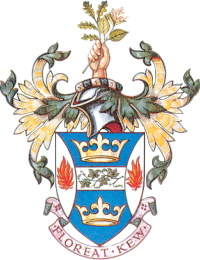Begonias and a blazer in the Philippines
An account of field visits and participation in the Sixth International Flora Malesiana Symposium in the Philippines
More than 7,000 islands make up the Philippines, a fascinating country lying north of the equator and east of the South China Sea. Recalling Begonia collecting adventures there in 1976, I was delighted to receive a generous Guild Award towards another visit in September, 2004. Sandwiched between field-trips, the triennial Flora Malesiana Symposium was an international meeting during which I presented a paper about begonias and the botanist, Merrill.
First, on 14th September, I joined the pre-symposium visit to Palawan, island home to some of the last remaining Philippine forest, but before we set out, our ‘Symposium’ clothes were forwarded to the University at Los Banos. Unwisely, I chose to keep my blazer with me which, in the field, proved quite useless and hung all week in dusty huts!
From Puerto Princesa, Palawan’s capital, we travelled in a colourful ‘jeepney’, a ‘tin can-like’ vehicle common throughout the Philippines and, on the first evening, sailed to Rasa Island, where the critically endangered Philippine Cockatoo roosts on mangrove trees. After good sightings and a glorious sunset we returned to our palm-fringed beach and, next morning, waded across the Talakaigan river into Dipterocarp forest, discovering an unusual red-and-white striped ginger, a beautiful white-flowered Habenaria sp. and, on wet rocks, Begonia woodii. Then, in torrential rain, we just managed to re-cross the swollen waist-deep river. Moving to stilted huts by a beach on the north coast, we studied a distinctive ultramafic flora on Mt. Bloomfield and later, on limestone, I found Begonia suborbiculata. Another attractive species was growing on cliffs at the entrance to a long underground river, which now has world heritage status. Sadly, those idyllic days on Palawan came to an end all too quickly and, with an unused scruffy blazer, we returned to Luzon.
The mid-symposium field-trip was to Mt. Makiling, an ancient volcano and one of the Philippines’ richest botanical sites, conveniently situated next to the university campus. Begonia aequata, flowering profusely in the canopy, was found on the mossy-forested summit at 1,090m, and our descent through montane forest, featured a multicoloured leech, a green pit viper and a boiling mud-spring.
The Symposium week was deemed a great success, but the blazer was never required and was left behind when a few of us then travelled to northern Luzon, often on dangerous mountain roads frequently subject to landslides. Though so much of Luzon is now devoid of forest, we enjoyed spectacular scenery and on the third day reached 4,700m, where vegetable terraces give way to Pinus kesiya forest. We stayed in Baguio, Bontoc and Banawe and found a rare stretch of montane forest on Mt. Polis, one of several classic Philippine collecting sites. Highlights of this adventure were seeing the endangered Benguet Lily in flower, Lilium philippinense, the famous ancient walled rice terraces of the Ifugao people – and of course several more attractive begonias. Returning to the capital on 1st October, time was then spent in the National Herbarium and I visited the ‘ Intramuros’, the old walled city of Manila.
To my surprise, finally wearing my tired blazer to travel home, I was upgraded to Business Class and, in Abu Dhabi, enjoyed a long wait in executive lounge luxury, simply because, as the official said, ‘I was well dressed’. It was worth having a blazer in the Philippines after all!
